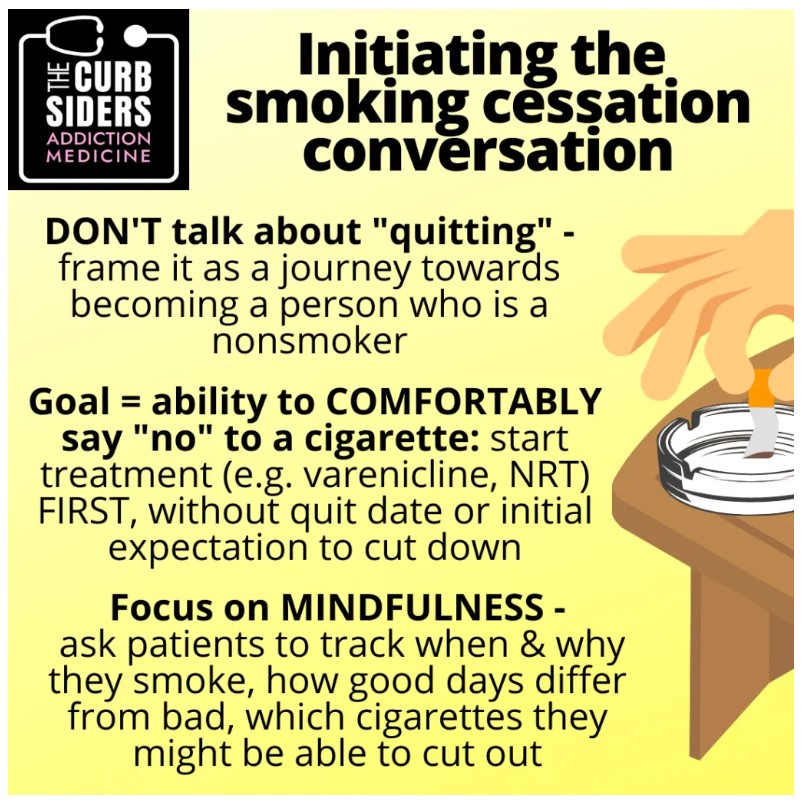Today, I reviewed the podcast and show notes of and excerpted from #11 Smoking Cessation: It’s Not a Drag* from The Addiction Medicine Podcast [link is to the complete episode list].
*Stahl, N, Galiatsatos P, Mullins K, Morford K, Chan, CA. “#11 Smoking Cessation: It’s Not a Drag with Dr. Panagis Galiatsatos”. The Curbsiders Addiction Medicine Podcast. http://thecurbsiders.com/addiction September 15th, 2022.
All that follows is from the above outstanding resource.
With Dr. Panagis Galiatsatos
Tackle smoking cessation by offering your patients evidence-based treatment options. We discuss pharmacotherapy, mindfulness, and practical tips on how to manage short-acting nicotine replacement therapy to help your patient stop smoking. We are joined by Dr. Panagis Galiatsatos from Hopkins (@Panagis21).
Links
- Dr. Galiatsatos Smoking Cessation Course
- Galiatsatos, 2022: Summary for Clinicians: An ATS Clinical Practice Guideline for Initiating Pharmacologic Treatment in Tobacco-Dependent Adults
- Coming soon: Behind the Evidence: the Addiction Medicine Podcast
Goal
Listeners will be able to treat patients with tobacco use disorder using evidence-based medications and counseling strategies.
Learning objectives
After listening to this episode listeners will…
- Assess the quantity, frequency, and severity of tobacco use.
- Compare the 3 FDA-approved medications for tobacco use disorder: nicotine replacement therapy, bupropion, and varenicline
- Describe different formulations and appropriate dosing of nicotine replacement therapy
Smoking Cessation Pearls
- Set the stage for discussing smoking cessation by creating a non-judgemental space and AVOID lecturing the patient to just “quit smoking.”
- Assess an individual’s tobacco use by asking at what age they started smoking, as well as tobacco quantity, quality (e.g. what brand of cigarettes do they smoke?), how they smoke, and prior quit attempts.
- Three long-acting medications are FDA-approved for smoking cessation; these include varenicline, bupropion, and nicotine replacement patches. Select a medication based on a patient’s prior experiences and co-morbidities.
- When prescribing short-acting nicotine replacement therapy like gum or lozenges, be sure to counsel patients on “parking” the formulation inside their cheek to ensure optimal absorption.
- Mindfulness* can be an important component of smoking cessation and can play a key role in relapse prevention. Dr. Galiatsatos recommends integrating mindfulness techniques when counseling a patient on smoking cessation.
- For patients who report that their nicotine patch falls off, consider applying surgical tape and wrapping it around the patch to ensure that it adheres to the skin.
- Encourage patients to call smoking cessation quitlines; this can be one mechanism to access free pharmacotherapy.
*Links To Mindfulness Resources







